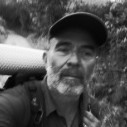Alaska & Antarctica trips — best zoom lense?
-
Recently Browsing 0 members
- No registered users viewing this page.
-
Similar Content
-
- 13 replies
- 1,083 views
-
- 88 replies
- 10,506 views
-
- 3 replies
- 634 views
-
- 9 replies
- 406 views
-
- 2 replies
- 494 views
-



Recommended Posts
Join the conversation
You can post now and register later. If you have an account, sign in now to post with your account.
Note: Your post will require moderator approval before it will be visible.